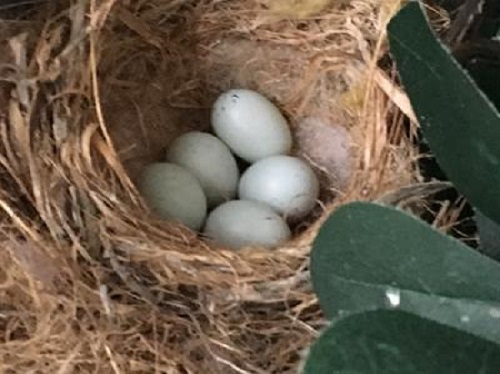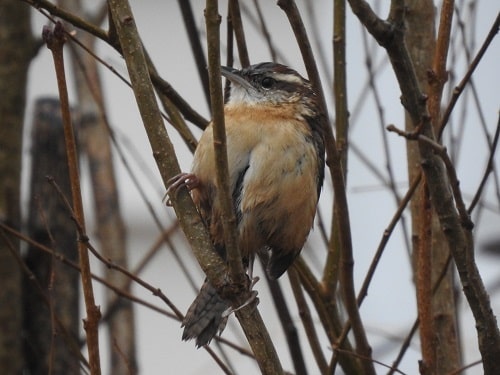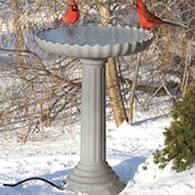When Do Wrens Start Building Nests? (Carolina and House Wren Guide)
If you've got a birdhouse or an old boot lying around, don't be surprised if a wren tries to move in. These tiny, loud, and bold birds are some of the earliest nesters in many parts of the U.S.—especially the Carolina Wren.
Nesting Season at a Glance
| Wren Species | Nesting Season | Typical Clutch Size | Notes |
|---|---|---|---|
| Carolina Wren | Late Feb — April | 3-7 eggs | Can raise multiple broods |
| House Wren | April — May | 5-8 eggs | Builds dummy nests to attract females |
Learn more about each bird's behavior in our Carolina Wren species profile and House Wren species profile.
Why Do Wrens Nest So Early?
Male House Wren Singing to Attract a Mate
Wrens are opportunistic and adaptable, and their early nesting gives them an edge. Carolina Wrens don't migrate, so they're ready to claim spots and start building as soon as winter breaks.
House Wrens are aggressive competitors—nesting early helps them secure prime territory before other cavity nesters show up.
Their rapid reproductive cycle also allows for multiple broods, especially in warmer climates.
Where and How Do Wrens Build Their Nests?
Both wrens are cavity nesters, but they're not picky. They'll nest in:
- Birdhouses
- Hanging baskets
- Mailboxes
- Coat pockets
- Garage shelves
House Wrens are especially notorious for stuffing sticks into multiple spots (called "dummy nests") and bringing potential mates to each for her to choose from.
Carolina Wrens usually pick a single site but will return to familiar locations year after year.
Their nests are domed and messy, made with twigs, grasses, feathers, and even plastic.

Five Carolina Wren Eggs
Carolina Wrens Nesting Timeline
Carolina Wrens are non-migratory, which means they don't leave in winter—and that gives them a head start on spring nesting. In the South, they can begin as early as late February. In northern areas, nesting usually begins in March or April.
They often raise two or even three broods per year if the weather cooperates. Their nests are typically tucked away in cozy, covered spaces—like flowerpots or folds of a tarp.
House Wrens Nesting Timeline
House Wrens migrate and typically arrive in northern states around late April. Once they arrive, the males immediately begin claiming territory and building dummy nests to win over females.
The female chooses the final nest site and lays 5 to 8 eggs. You'll often hear lots of bubbling and scolding as they defend their space—House Wrens are small but mighty.
They usually raise two brood each season. In the south, they may raise three broods.
How to Tell If Wrens Are About to Nest
- Males singing constantly from one perch
- Birds going in and out of small holes
- Piles of twigs in boxes, cans, or flowerpots
- A wren fluffed up and watching a spot protectively
If they've moved in, you'll know soon, wrens are not subtle.

Adult Carolina Wren
Encouraging Wrens to Nest in Your Yard
- Put up a nest box with a 1 1/8 -inch entrance hole (wrens prefer small cavities)
- Place it 5-10 feet off the ground in a quiet, sheltered area
- Avoid placing boxes too close together—House Wrens may get territorial
- Keep nearby shrubs or brush for cover and foraging
Providing the right space and leaving nest-friendly materials nearby can invite these charming (and chatty) guests back year after year.
Common Questions
Do wrens reuse nests?
Usually no with Carolinas, but House Wrens may reuse nestboxes or materials. Each species may rebuild in the same territory if nesting was a success.
Do House Wrens chase off other birds?
Yes, especially other cavity nesters like chickadees or bluebirds. They will also pierce the eggs of other birds.
Can I move a wren nest?
If eggs or young are present, it's illegal. Before nesting starts, you can clean out old debris or block access if needed.
Make sure you get a photo or two.
Then Follow This link And Share Your Wren Story Here.
Read What Other Visitors Have Shared Read Stories



